How to turn on the oven in a gas stove: recommendations for igniting gas in the oven and an overview of safety rules
A gas stove is a completely familiar and understandable device. However, its use may raise certain questions. So, it may not be clear to the hostess how to turn on the oven in a gas stove if the owner has not previously encountered a specific model.
But dishes cooked in the oven usually turn out to be much tastier than those that have undergone heat treatment on the hob, and retain more useful elements. Therefore, it is worth learning once to start the operation of the oven, so that later you can easily pamper your household with delicious culinary masterpieces of any complexity. Do you agree?
In this material we will deal with the principles of operation of gas ovens, talk about how to light a flame in them and the safety precautions that must be observed when operating such equipment. We supplement the material with visual photos and thematic video recommendations.
The content of the article:
The principle of the gas oven
Understanding how a gas oven works, it’s much easier to light a fire in it. If the hob of the hob directly heats the bottom of the dishes and absentmindedly warms up the limited space around it, then the oven pumps the desired temperature in an isolated space. The heating of the air, which is involved in the heat treatment, often occurs from below, after which the hot flows evenly rise up, circulating inside the oven.
The oven has its own separate burner, in which the gas-air mixture burns. Burners are most often diffusion: the mixing of gas and air in them occurs naturally, without additional suction of oxygen.
After opening the tap, gas passes through the nozzle, combines with air, and ignites using a spark. The latter is formed due to electricity or an open fire from a match or a lighter.
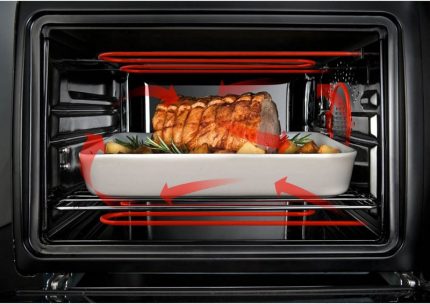
If your oven is equipped convection, we recommend that you familiarize yourself with the features of turning on, using and turning off this mode.
Ways to light a fire in the oven
Ignition of a flame can be carried out in two ways, which directly depend on the functional features of the equipment model itself. It depends on them how the housewife can ignite the gas oven in her kitchen.
The ways to light a fire in the oven are as follows:
- Electric ignition Ovens are inherent in many modifications and are more convenient and safe, since they do not imply direct contact of a person with a burner.
- Manual ignition flame requires some skill. But models of stoves or ovens with a similar principle of igniting a fire usually cost a little less.
The algorithm for operating different ovens will be slightly different. Consider the features of use in more detail.
Method # 1 - electric ignition of the oven
Turning the oven on with automatic ignition is quick and easy.
To do this, you need to take just a few simple steps:
- turn the gas supply valve, setting it to maximum;
- press and hold the electric ignition button;
- after the flame appears, after 5-10 seconds release the ignition button.
If, after these manipulations, the fire does not light up or the burner does not work correctly, you must stop the fuel supply and open the oven door for ventilation. After a couple of minutes, you need to repeat the attempt to ignite.
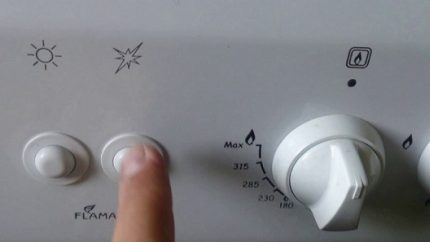
The need to hold the auto ignition button lies in the security system of the oven. The gas control sensor needs a certain temperature and time to properly monitor the operation of the equipment.
Additionally, holding is designed to protect the device from producing unwanted sparks if the button is pressed accidentally. After briefly pressing this button, you can set the temperature level necessary for cooking a particular dish.
Method # 2 - manual kindling of a flame
You can burn gas in the oven manually. Even if the cabinet is equipped with electric ignition, situations may arise when this option will not work. Therefore, even the owners of modern technological models should understand how you can set fire to matches an oven in a gas stove.
Step by step, this process looks like this:
- air the oven for several minutes and find the ignition hole;
- bring the burning match or lighter to the igniter;
- turn the gas supply relay and hold it until the flame flashes;
- after ignition, do not release the feed handle for 15 seconds so that the security system correctly responds to the inclusion of the oven;
- if the flame in the burner is produced stably, without separation and sparks, you can close the door and heat the cabinet for subsequent cooking.
To find the igniter window, carefully inspect the bottom and walls of the oven that is turned off. Most often, the required hole is located at the bottom of the cabinet or on its walls. If the oven is equipped with a gas grill, its burner should be looked up.

For ignition it is better to use long fireplace matches or a special lighter with an elongated nozzle. This will protect your hands from burns and maximize the distance between the burner igniter and the brush.
Oven ignition safety
Whatever way the flame is ignited in the oven, it is always worth observing specific safety regulations. Interaction with gas is always a risk, so you should be extremely careful to level the likelihood of an emergency.
Next, we consider the basic rules for safe ignition of the oven:
- Before turning on the gas oven, always ventilate it to free up space from possible gas accumulation.
- Inspect hoses, periodically check their connections for leaks, and if necessary replace worn out with a new one.
- Make sure that the burner in the oven ignites completely. If a section does not burn, shut off the gas supply, ventilate the cabinet and re-ignite the flame.
- Never leave a working oven unattended, do not forget to check for flame through the window of the cabinet door.
- Never use the included oven as a heating source. Do not heat the kitchen with the air heated by the burner.
- Thoroughly clean all surfaces inside the oven after each cooking. Grease and other contaminants can clog the holes of the igniter or the burner itself, which will cause the flame to burn unevenly during subsequent operation or to be completely absent.
Gas smell or sound alert leak sensor - an alarm signal at which it is forbidden to use the equipment. Ventilate the room and, if possible, find the source of the fuel leak.

It is always worth monitoring the operation of potentially hazardous equipment. The incorrect functioning of any elements should be alarming and should become a reason for calling the master from gas service to conduct an inspection, diagnose the problem and fix it.
Typical malfunctions of a gas oven
Even with careful use and proper ignition, the flame in the oven burner can be unstable or completely disappear. These common problems have very specific causes and can be fixed quite easily.
If the flame in the oven is ignited without problems, but often goes out after a while, the cause can be found in the gas control system. Most likely, its sensor is defective or dirty, so it does not respond to ignition correctly, giving a signal to shut off the gas supply.
In the same situation, problem nodes may be thermocouple and gas valve solenoid valve. The latter does not receive enough voltage due to a breakdown of the flame control sensor and automatically shuts off the supply of blue fuel.

In addition to malfunctions of specific parts, the cause of the flame extinguishing after heating the oven may be an incorrectly adjusted minimum flame level. After maximum heating, the burner goes into gentle mode. If it does not meet the necessary parameters, the thermocouple will not warm up enough, which is why the device is turned off.
If the gas burner in the oven does not turn on at all, the primary diagnosis will be the detection of blockages in its openings, which may form due to soot or food debris, or contamination of the gas nozzle itself. If there are no deposits interfering with the ignition, it is likely that the structural parts have worn out and require replacement.
The gas valve as a separate unit can also affect the malfunctioning of the burner in the oven. Any link in the design of the internal rotary mechanism may be damaged. Often this part is not repairable and is completely replaced.
Conclusions and useful video on the topic
It looks and where is the igniter hole in the gas oven, described in the video below. Additionally, the video shows how to remove the protective plate and gain access to the burner.
Information on how to light a flame in an oven without electric ignition with gas control in the following video:
As with any gas equipment, working with the oven should be extremely accurate. Pay attention to any disturbing dysfunctions of the device and contact specialists in time to avoid emergencies.
And to kindle a flame in a gas oven is quite simple: it is worth learning to do it correctly only once, after which no help will be required to the hostess.
Do you want to supplement the information provided with useful recommendations or comments? Or do you have questions that we did not touch on in this article? Ask them to our experts and other site visitors - the feedback form is located below.

 How to ignite an oven in a gas stove “Hephaestus”: ignition rules and the principle of operation of a gas oven
How to ignite an oven in a gas stove “Hephaestus”: ignition rules and the principle of operation of a gas oven 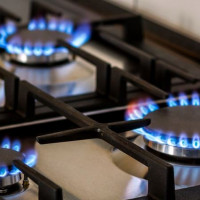 How to increase the power of the gas burner and improve the flame on the stove: an overview of popular ways
How to increase the power of the gas burner and improve the flame on the stove: an overview of popular ways 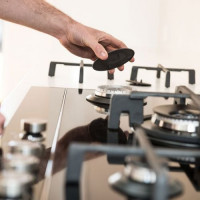 Why the burner does not work on the gas stove: common causes and methods for eliminating them
Why the burner does not work on the gas stove: common causes and methods for eliminating them 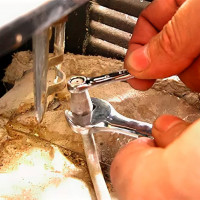 Replacing the nozzles in the Hephaestus gas stove: a detailed guide for replacing nozzles
Replacing the nozzles in the Hephaestus gas stove: a detailed guide for replacing nozzles 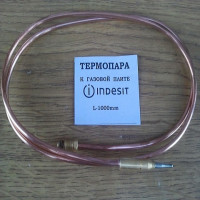 Thermocouple in a gas stove: principle of operation + instruction on replacing the device
Thermocouple in a gas stove: principle of operation + instruction on replacing the device 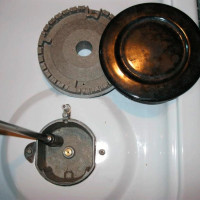 Replacing the nozzles in a gas stove: purpose, structure and detailed instructions for replacing nozzles
Replacing the nozzles in a gas stove: purpose, structure and detailed instructions for replacing nozzles  How much does it cost to connect gas to a private house: the price of organizing gas supply
How much does it cost to connect gas to a private house: the price of organizing gas supply  The best washing machines with dryer: model rating and customer tips
The best washing machines with dryer: model rating and customer tips  What is the color temperature of light and the nuances of choosing the temperature of the lamps to suit your needs
What is the color temperature of light and the nuances of choosing the temperature of the lamps to suit your needs  Replacement of a geyser in an apartment: replacement paperwork + basic norms and requirements
Replacement of a geyser in an apartment: replacement paperwork + basic norms and requirements